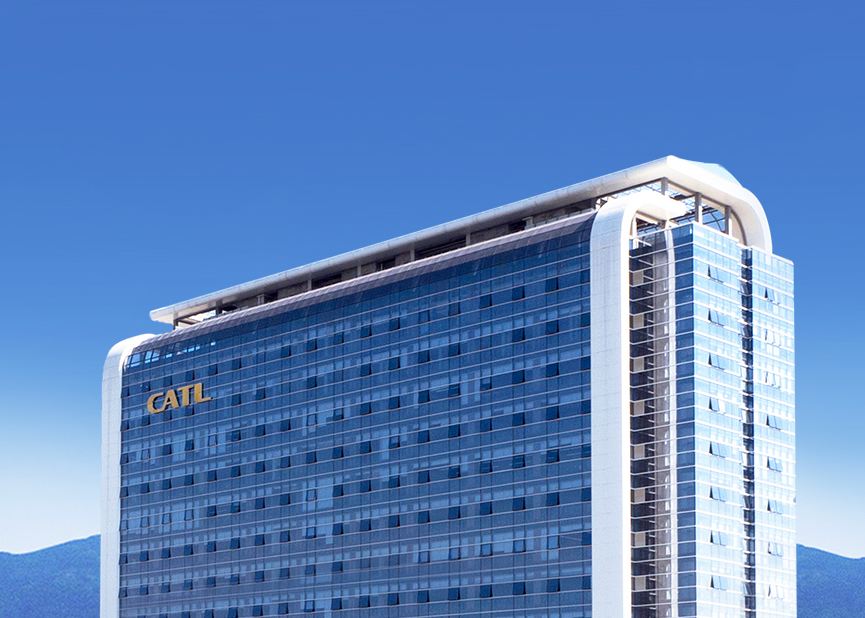Global demand for batteries continues to soar, driven by accelerating electrification across vehicles, energy storage, and heavy-duty transport.
Worldwide new energy vehicle (NEV) sales are forecast to reach 55 million units by 2030—3.1 times higher than 2024 levels—while energy storage capacity is projected to climb to 92 GW in 2025, up nearly 23% year-on-year, according to BNEF and OICA data. Amid this growth, Contemporary Amperex Technology Co., Limited (CATL) is scaling production aggressively, reinforcing its technological and financial leadership across the global battery value chain.
CATL’s third-quarter 2025 report shows revenue of RMB 104.2 billion (USD 14.7 billion), a 12.9% year-on-year increase, while net profit rose 41.2% to RMB 18.55 billion (USD 2.6 billion). For the first nine months of 2025, total revenue reached RMB 283.1 billion, up 9.3%, with net profit to shareholders of RMB 49.0 billion, a 36% rise from 2024.
Operating margins expanded to 19.1%, supported by higher overseas sales, a favorable product mix, and growing cost efficiencies from scale. Basic earnings per share climbed to RMB 4.10, while total assets rose 13.9% to RMB 896 billion, reflecting significant investment in new capacity. Notably, equity attributable to shareholders surged 27% year-on-year to RMB 314 billion, underscoring the company’s robust balance sheet.
Cash flow from operations reached RMB 80.7 billion, up 19.6% from the prior year, while net cash from financing activities rebounded sharply due to proceeds from CATL’s H-share IPO. Management approved an increase in entrusted wealth management quota to RMB 80 billion, and paid a midyear dividend of RMB 10.07 per 10 shares, equivalent to 15% of interim net profit.
Analysts expect continued momentum through 2026, with Citi forecasting 31% growth in sales volume—15 percentage points above market consensus—and Bernstein citing structural cost advantages that sustain margins despite cyclicality in EV demand.
Expanding Global Production Footprint
CATL is accelerating expansion to meet surging battery and energy storage demand. Domestically, capacity growth is concentrated in Jining (Shandong), Ruiqing (Guangdong), Yichun (Jiangxi), Xiamen and Ningde (Fujian), and Qinghai, with Jining alone adding 100 GWh of energy storage output by 2026.
Internationally, the company’s German plant achieved profitability in 2024, while construction in Hungary remains on schedule. Phase 1 of the Hungarian plant—planned for over 30 GWh—will be operational by the end of 2025, with Phase 2 advancing as part of CATL’s broader European localization strategy. In Spain, a joint venture has completed initial regulatory approvals, and in Indonesia, CATL’s integrated 15 GWh battery project is expected to start operations in H1 2026, supporting both EV and stationary storage applications.
The rise of renewables and AI-driven electricity demand is pushing grid operators to deploy large-scale, long-duration storage. CATL’s systems must perform over 15–20 years with single-cell failure rates at the parts-per-billion (PPB) level—stringent reliability targets achieved through multi-level safety architecture, advanced materials engineering, and rigorous verification.
Its 587 Ah cell, offering high energy density and long cycle life, is rapidly scaling in production, while the TENER Stack—a 9 MWh stackable ultra-large system—delivers 50% higher energy density and 45% improved volume utilization compared with conventional 20-foot systems. Using CATL’s LFP chemistry and triple-layer insulation, the system withstands Category 5 hurricanes and magnitude 9 earthquakes, demonstrating engineering rigor aligned with IEEE 693 standards.
CATL’s innovation trajectory continues to define its market edge. At IAA Mobility 2025, it unveiled the Shenxing Pro battery for Europe, featuring NP 3.0 safety architecture with eight core technologies, including flame-retardant electrolytes and nano-coated cathode materials. The system maintains power for over an hour post-thermal runaway—vital as Level 3–4 autonomous driving shifts safety responsibility from drivers to vehicles.
The Shenxing Pro’s Wave Cell design enhances stiffness by 25% and boosts energy density by 3%, offering up to 758 km WLTP range or ultra-fast charging with 410 km restored in 20 minutes, even in subzero conditions. CATL also continues to advance its Freevoy dual-power battery, Naxtra sodium-ion platform, and second-generation Shenxing superfast charger, reinforcing a diversified product portfolio across applications.
Heavy-Duty Vehicles and the Battery-Swap Ecosystem
Commercial vehicle electrification in China has reached a 23% adoption rate, projected to exceed 50% within three years. CATL’s battery shipments to the heavy-duty segment now represent nearly 20% of total output. To enable scalable deployment, CATL introduced the 75# standardized swap block and Qiji full-scenario chassis swap system, already compatible with over 30 vehicle models.
Strategic collaborations extend this ecosystem. The partnership with JD Group integrates CATL’s battery technology into a “green + digital + zero-carbon” supply model, while cooperation with Sinopec aims to build a national battery-swap network. More than 700 Choco-Swap stations are already operational, with 1,000 expected by year-end 2025, including the first Qiji Energy heavy-truck swap station.
With operating cash exceeding RMB 80 billion and financial assets surpassing RMB 360 billion (USD 50 billion), CATL retains ample liquidity to weather market volatility and invest in next-generation chemistries, from sodium-ion to solid-state and hybrid platforms.
Stay updated on the latest in energy! Follow us on LinkedIn, Facebook, and X for real-time news and insights. Don’t miss out on exclusive interviews and webinars—subscribe to our YouTube channel today! Join our community and be part of the conversation shaping the future of energy.





